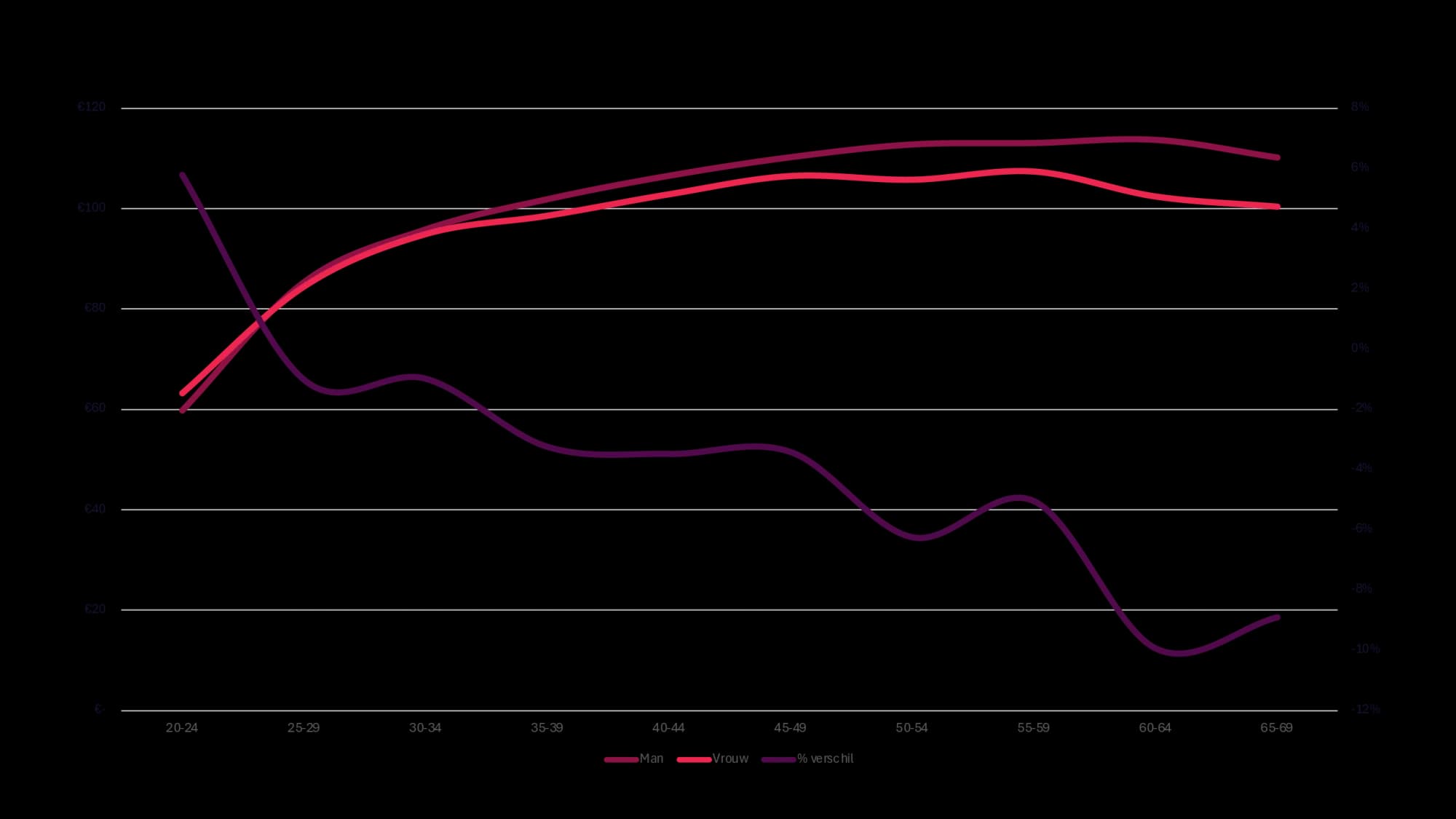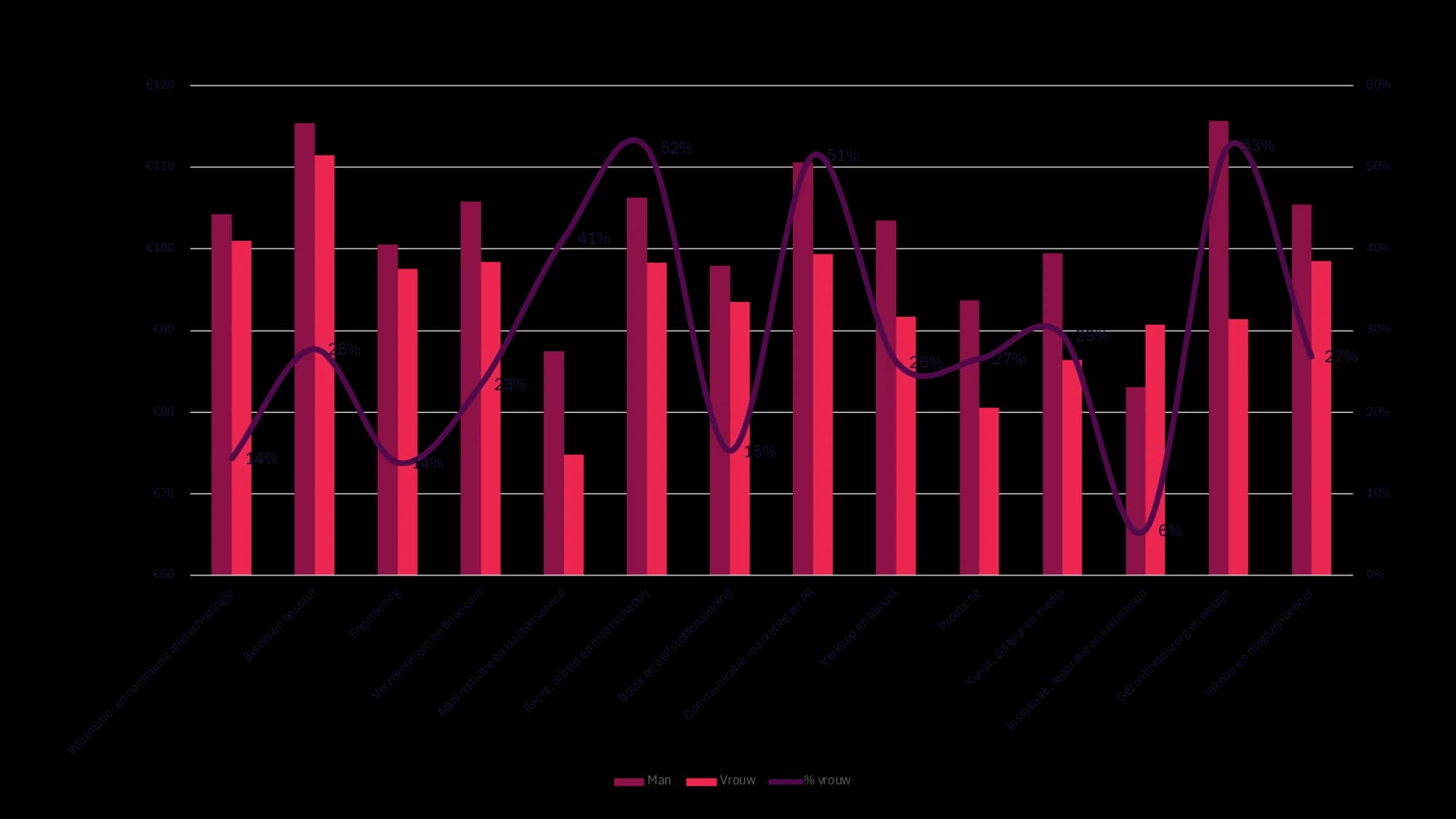We know the headlines: women earn less. But how level is the playing field when women set their own rates? HeadFirst Group dived into the data of tens of thousands of highly educated professionals – both self-employed and employed by suppliers – who work at more than 500 clients via its Striive platform. And what did they find? The pay gap still exists, but it's smaller than you might think. That gives hope and direction.
Small pay gap among self-employed
According to recent figures from CBS, women earn an average of 10.5% less per hour than men. However, these figures are not adjusted for factors such as age, role or sector.
HR-tech service provider HeadFirst Group investigated the situation for professionals. Conclusion: female professionals earn on average 5.7% less than men. That is almost half the difference in salaried roles. So, those working independently are closer to equal pay.

Young women leading the way
In the age group 20–24 years, female professionals even earn more than their male colleagues. However, as age increases, the picture changes: among those over 50, the difference in hourly rates rises to tens of percentages. Seniority pays off, especially for men.

Figure 1: Difference in hourly rate 2025 between men and women by age class
Where does the difference lie?
Not every occupational class shows the same gap. In these three fields, the difference is small (around 3%):
- Information and communication technology
- Policy and administration
- Engineering
An encouraging sign that equal pay is achievable. On the other hand, the differences remain substantial in occupational classes such as:
- Administration and customer service
- Communication, marketing and PR
- Sales, production, and healthcare
In some professions, women earn over 10% less here.

Figure 2: Hourly rate difference 2025 between men and women by occupational class
Sector makes the difference
The differences also vary by sector. In healthcare and retail, the gap is the largest, up to 20%. Women are more likely to hold executive roles here with lower rates.
But there is also positive news: in ICT, transport, and the government, the difference is around 1 to 3%. In the government, we even see hardly any differences in the same occupational classes.
Functions under scrutiny
A deep dive into common functions shows a nuanced picture. Sometimes women even earn more than men. For example, the hourly rates of female recruiters are on average higher, even after adjusting for age.
In other roles, such as full-stack developers, women earn less. This is mainly due to age differences: older female developers are rare, and experience heavily influences the rate.
Faster catch-up
Notably, the speed of change among professionals. Since 2019, the hourly rate for female freelancers has risen faster than for men:
- Women: +3.7% per year
- Men: +2.1% per year
Over the last ten years, the rate for male freelancers increased by 60%, while for women, it was an impressive 83%. For comparison: the wages of salaried employees rose by 29% (men) and 40% (women).
This accelerated catching up is partly due to a shift in how clients make choices. Technology plays a key role in this. More and more organisations select professionals based on objective, data-driven methods. The matching technology of the Striive platform does not consider gender or age, but solely focuses on competencies and experience. This ensures women receive a market-conform rate faster and are less likely to be disadvantaged by (unconscious) biases. If this trend continues, HeadFirst Group expects the rate gap among professionals to be completely eliminated within two years.
What can you do with this?
Do you work in recruitment or HR-Tech? Then you know that equal pay is no longer a nice-to-have. It is the norm. Organisations that focus on this strengthen their brand and attract talent more quickly. Use our insights to strengthen your policy:
- Provide transparency on rates when hiring freelancers.
- Check your impact: are you helping to close the gap or keeping it in place?
- Ask critical questions: is the rate market-conform or a result of old patterns?
The data shows we are on the right track. The gap is narrowing and professionals are leading the way. In some sectors, equal pay is already a reality. There is movement, but we are not there yet. Together, we are building a fair labour market. Are you in?
*Source: ZiPconomy: Highly educated female freelancers pave the way to equal pay
